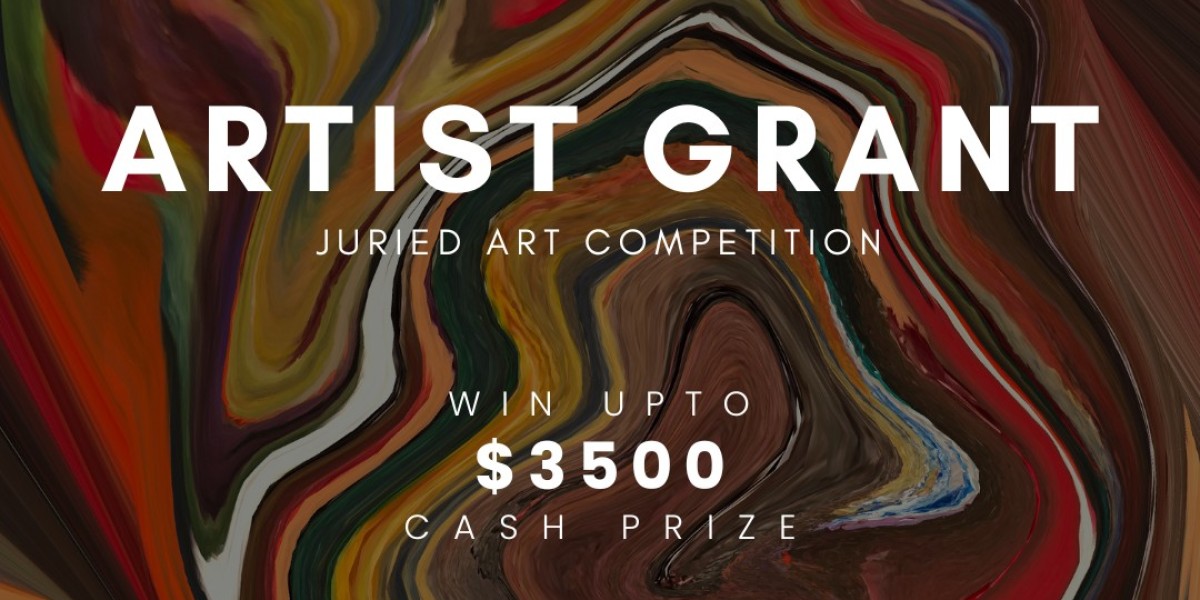An artist’s journey is passionate, creative, full of productive challenges, and they are continuously driven to an unrelenting drive to bring their creative visions to life. Yet, as every creative endeavour needs support, artists also need some support and sponsorship to let their work go uninterruptedly. That is why grants for artists can be truly beneficial for artists, offering resources to turn their dreams into reality. Whether you are looking for a residency, or apply for an artist grant for the first time, or seeking to refine your portfolio, a compelling presentation of your work can make all the difference.
In this blog, you will find a comprehensive guide to building a strong artist portfolio tailored for grant applications, to make sure that you stand strong as an artist from the rest of the lot. Yes, you need to be more focused on creating a portfolio to be considered for artist grants by reputable organizations patronizing art – like, grant commissions or art galleries like TERAVARNA and more. Here’s how you go about it.
· Why is a Portfolio Essential for Artist Grants?
“Art is the most intense mode of individualism that the world has known.” – Oscar Wilde
In a portfolio what you showcase is not only your creative work, but something more than that. A strong portfolio tells a story, tells about your artistic journey to the committees and organizers providing the grants, about who you are, what you create, and why you need grants to keep your art alive. An outstanding portfolio bridges the gap between your vision and the grant provider’s goals, helping them understand your journey as an artist and more.
· Understand the Grant Requirements
While you start creating or upgrading your art portfolio, review the grant guidelines. Every artist grant is unique, so you must understand the perspective and requirements and customize your portfolio accordingly. What are the factors you need to gloss over –
Are you eligible for the grant
What are the preferred art forms or themes
What are the documentation formats (PDFs, online submissions, etc.)
Submission deadlines
Show professionalism and attention to detail.
· Curate Your Best Work
“Every artist dips their brush in their own soul and paints their own nature into their pictures.” – Henry Ward Beecher
You must be careful about what art piece you choose while applying for the grant.
Select artworks that represent your artistic style and vision.
Align with the theme or objectives of the grant.
Show your technical skills and creativity.
If you apply for multiple artist grants, it is best if you can customize your portfolio for each application to go with the grant requirement and focus.
· Design Your Portfolio in an Organized Manner
Structuring your portfolio is crucial. A well-organized portfolio will surely help the viewers or the judges to go about easily and effectively.
Basic Information: Include your name, contact information, and a professional-looking photograph of yours.
Artist Statement: A brief but mindful summary of your artistic journey, philosophy, influences, and aspirations.
Include Your Works: Include best-quality images or videos of your work that includes the titles, dimensions, mediums, and date of creation, etc.
Proposal for Grant: If need be or the grant requires, describe your project idea and how the funds will be used.
Highlight Credentials: Mention details about your education, residencies, and notable achievements.
Include Positive Testimonials: It is good to have letters of recommendation or statements from collaborators to add to your grant’s eligibility.
· Create High-Quality Visuals
“The details are not the details. They make the design.” – Charles Eames
Your images show your potential as artist – the commissions for grants for artists review a handsome number of portfolios so it’s better to make sure your submission of artworks stand out:
Use a high-resolution camera or professional photographer.
Always choose natural or studio lighting.
Edit images to make the colors, and textures look authentic.
Focus on the artwork, cropping out distractions.
For video art or performance pieces, provide links to short, well-edited clips showcasing your best moments.
· Write a Compelling Artist Statement
Your artist statement is your chance to speak directly to the reviewers, so make sure the statement is clear and to-the-point, reflecting honesty.
Write about the medium you use and about the subject matter.
Write about your inspiration behind the artistic journey.
Write something compelling about the creative process.
“I love painting nature. It fills me with joy and enables me to be playful with my subjects. One of the most enduring qualities of art is its power to transport viewers to another place. I invite viewers to my imagined world, where my subjects have personalities and a voice that people can connect with on an emotional level.”
· Tailor Your Project Proposal
Always be consistent with the grant project’s mission, focusing on alignment with their unique vision and purpose.
Describe the project’s goals and significance.
Mention about your timeline and milestones.
Break down your budget to show you have considered costs meticulously.
You can write about your purpose like this, -
"With the artist grants resource, I plan to create a public art installation, 'Echoes of the Earth,' using recycled materials to raise awareness about environmental sustainability."
· Highlight Your Achievements
You will benefit from mentioning the awards, exhibitions, and press mentions to validate your expertise. Write a bullet marked category of all your achievements and recognition so that the galleries or the commissions can have a better picture of your credibility and eligibility for artist grants.
· Follow Submission Guidelines
“Discipline is the bridge between goals and accomplishment.” – Jim Rohn
Adhering to submission instructions demonstrates professionalism. Double-check:
File formats and sizes
Naming conventions
Required forms or signatures
· Review Everything before You Submit for Grants for Artists Application
Check out for typos or inconsistencies and proofread your portfolio multiple times; consider using grammar checker tools or hiring a professional editor.
Some Wise Thoughts and Additional Tips for Success
“You can’t use up creativity. The more you use, the more you have.” – Maya Angelou
Keep Your Portfolio Updated: Regularly add new works and achievements.
Network: Attend workshops, exhibitions, and meetups to learn about new artist grants.
Be Authentic: Stay true to your artistic voice. Committees value originality over conformity.
Application for artist grants involves competition, but with a strong portfolio you can elevate your application and showcase the unique value you bring to the art world. By curating your best work, presenting it professionally, and aligning it with the grant’s objectives, you can boost your chances of turning your creative ambitions into realities that are materialized by convenient and essential grants for artists. With these valuable and helpful insights, you can start projecting your artworks for the next grant, with a clear vision and success!









